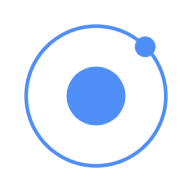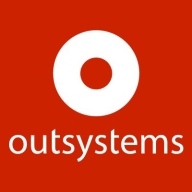

OutSystems and Ionic compete in the low-code and hybrid app development market. While OutSystems shines in rapid application iteration with its visual modeling capabilities, Ionic stands out with its focus on hybrid app development using a single codebase for iOS, Android, and web.
Features: OutSystems offers advanced low-code capabilities such as one-click publishing, high reuse of components, and seamless API integration. Its visual modeling and drag-and-drop functionalities simplify development, making it ideal for rapid application iteration. The platform supports both cloud and on-premise deployments. Ionic excels in hybrid app development with a single codebase for multiple platforms, including iOS and Android. It utilizes Angular and React, making it attractive for web developers familiar with JavaScript frameworks.
Room for Improvement: OutSystems requires performance improvements in Service Studio and better resources for asynchronous processing. Its integration capabilities and native mobile app support need enhancement, along with its cost structure which could deter smaller enterprises. Ionic could improve its native support and community resources. Aspects like documentation and integrating native features require refinement. Developers have reported navigation difficulties and performance limitations in the desktop environment.
Ease of Deployment and Customer Service: OutSystems provides flexible deployment options, supporting public, hybrid, and private clouds, along with on-premises setups. While technical support is generally positive, it sometimes lacks specialization for complex issues. Ionic, being open-source, mostly deploys on-premises but also supports public and hybrid clouds. Its community-driven support model is reliable, though users suggest improved documentation and faster response times.
Pricing and ROI: OutSystems is considered expensive for smaller organizations with its annual licensing costs, yet it offers significant ROI through faster development times. Larger enterprises might find the investment worthwhile due to productivity gains. Ionic's open-source model involves no licensing fees, making it appealing for small to medium businesses. However, additional enterprise features may lead to extra costs.
| Product | Market Share (%) |
|---|---|
| OutSystems | 12.0% |
| Ionic | 5.5% |
| Other | 82.5% |

| Company Size | Count |
|---|---|
| Small Business | 7 |
| Midsize Enterprise | 2 |
| Large Enterprise | 6 |
| Company Size | Count |
|---|---|
| Small Business | 18 |
| Midsize Enterprise | 7 |
| Large Enterprise | 29 |
Ionic is an open-source UI toolkit for developing high-quality mobile and desktop apps with web technologies such as HTML, CSS, and JavaScript. Ionic focuses on the frontend UX and UI interaction of an app – UI controls, interactions, gestures, and animations. It is simple to learn and can be used without any frontend framework by utilizing a simple script inclusion.
While previous versions of Ionic were strongly connected to Angular, version 4.x of the framework was re-engineered to serve as an independent Web Component library, with integrations for the newest JavaScript frameworks, such as Angular. Ionic works well in most frontend frameworks, including React and Vue, however some frontend frameworks require a shim to enable full Web Component support.
The official Ionic CLI, or Command Line Interface, is a tool that enables developers to easily construct Ionic apps and offers a number of useful commands. The CLI installs and updates Ionic and also includes a built-in development server, build and debugging tools, and much more. If you are an Appflow member, you may manage your account and carry out cloud builds and deployments via the CLI.
Ionic Features
Ionic has many valuable key features. Some of the most useful ones include:
Ionic Benefits
There are many benefits to implementing Ionic. Some of the biggest advantages the solution offers include:
OutSystems is a platform for low-code application development that unites design, code, and deployment to simplify development so any business can create innovative solutions in a timely manner. There are various use cases an organization can employ with OutSystems, including:
OutSystems offers faster development and deployment times than hand-coding while delivering unique and personalized solutions to its customers. The main focus of OutSystems is high-performance low code which enables businesses to create functional products that answer their needs. It offers clients the ability to develop enterprise-grade applications with a high level of security.
The product stands out from its competitors as it offers:
It ensures its clients that the applications built using this platform are as scalable as hand-coded ones while increasing workspace productivity and evolving applications’ capabilities.
OutSystems Features
OutSystems has various features through which users can develop and deploy highly efficient applications and other products. Some of the features include:
OutSystems Benefits
The solution offers a wide array of benefits to companies that utilize it in their application development. Some of these benefits include:
Reviews from Real Users
Harikrishnan R., a technical lead at Netlink Software Group America Inc, likes OutSystems because the tool helps with validation, offers good features, and is reliable.
An owner at a consultancy thinks OutSystems is versatile with great scalability and great technical support.
We monitor all Mobile Development Platforms reviews to prevent fraudulent reviews and keep review quality high. We do not post reviews by company employees or direct competitors. We validate each review for authenticity via cross-reference with LinkedIn, and personal follow-up with the reviewer when necessary.